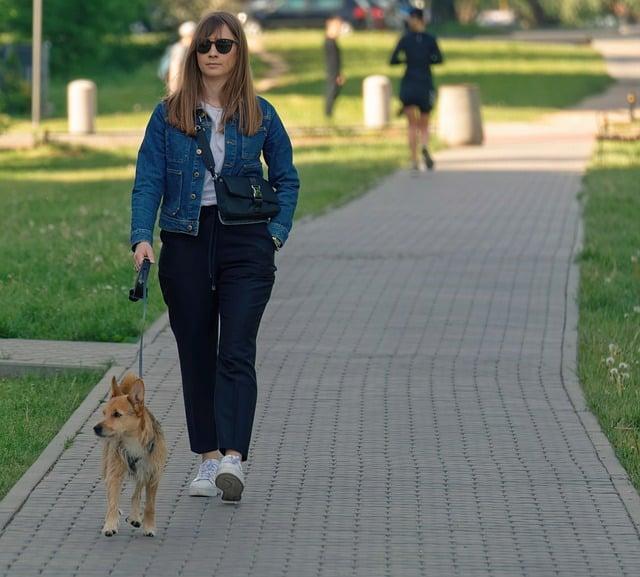In a quiet neighborhood, a gentle giant named Max roamed the streets. A Great Dane, he towered over children, yet his demeanor was as soft as a cloud. One day, a little girl fell off her bike, and while others rushed to help, Max calmly approached, nudging her with his nose and offering comfort. His owner smiled, knowing that despite his size, Great Danes are known for their friendly nature and protective instincts. If you’re seeking a big dog that embodies safety and affection, look no further than the Great Dane—where strength meets serenity.
Contents
- Understanding the Characteristics of Safe Big Dog Breeds
- Evaluating Temperament and Behavior in Large Dogs
- Essential Training and Socialization Techniques for Safety
- Choosing the Right Big Dog Breed for Your Familys Needs
- Q&A
Understanding the Characteristics of Safe Big Dog Breeds
When considering a large dog breed, safety is often a primary concern for potential owners. Understanding the characteristics that contribute to a dog’s temperament can help you make an informed decision. Safe big dog breeds typically exhibit a combination of **gentleness**, **intelligence**, and **trainability**. These traits not only ensure a harmonious relationship with family members but also promote a peaceful coexistence with other pets and strangers.
One of the most significant characteristics of safe big dog breeds is their **calm demeanor**. Breeds such as the **Newfoundland** and **Bernese Mountain Dog** are known for their gentle nature, making them excellent companions for families with children. Their ability to remain composed in various situations reduces the likelihood of aggressive behavior, allowing for a more relaxed environment at home. Additionally, these breeds often display a protective instinct, ensuring the safety of their loved ones without being overly aggressive.
Another essential aspect to consider is **trainability**. Breeds like the **Labrador Retriever** and **Golden Retriever** are not only large but also highly intelligent and eager to please. This combination makes them relatively easy to train, which is crucial for ensuring they understand commands and boundaries. A well-trained dog is less likely to engage in unwanted behaviors, contributing to a safer atmosphere for everyone. Consistent training and socialization from a young age can further enhance their ability to interact positively with various people and situations.
the **socialization** of big dog breeds plays a pivotal role in their safety. Dogs that are exposed to different environments, people, and other animals from an early age tend to develop better social skills. Breeds such as the **Boxer** and **Great Dane** thrive in social settings when properly introduced and trained. By fostering a well-rounded and confident dog, owners can significantly reduce the chances of fear-based aggression, making these breeds not only safe but also enjoyable companions for families and individuals alike.
Evaluating Temperament and Behavior in Large Dogs
When considering large dog breeds, evaluating temperament and behavior is crucial for ensuring a harmonious relationship between the dog and its family. Many people mistakenly assume that size equates to aggression, but this is far from the truth. In fact, numerous large breeds are known for their gentle nature and loyalty, making them ideal companions for families and individuals alike. Understanding the inherent traits of these breeds can help potential owners make informed decisions.
**Temperament** plays a significant role in determining how a dog will interact with its environment and the people within it. Breeds such as the **Labrador Retriever** and **Golden Retriever** are celebrated for their friendly and sociable dispositions. These dogs are often eager to please, making them highly trainable and adaptable to various living situations. Their affectionate nature allows them to bond deeply with family members, which is essential for a safe and loving home environment.
Another important aspect to consider is **behavioral tendencies**. Large breeds like the **Bernese Mountain Dog** and **Newfoundland** are known for their calm demeanor and patience, especially around children. These breeds typically exhibit a protective instinct without being overly aggressive, making them excellent guardians for families. Their gentle behavior can help foster a sense of security, allowing families to feel at ease with their presence.
it’s essential to recognize that **socialization** and training play pivotal roles in shaping a dog’s behavior. Regardless of breed, a well-socialized large dog is more likely to exhibit positive behaviors and adapt well to various situations. Engaging in obedience training and exposing them to different environments can significantly enhance their temperament. By investing time and effort into training, owners can cultivate a safe and loving atmosphere for their large canine companions.
Essential Training and Socialization Techniques for Safety
When it comes to ensuring the safety of both your big dog and those around them, proper training and socialization are paramount. **Establishing clear boundaries** and commands from an early age helps your dog understand what is expected of them. Consistency in training reinforces good behavior, making it easier for your dog to navigate various environments without becoming overly excited or anxious. Techniques such as positive reinforcement—rewarding good behavior with treats or praise—can significantly enhance your dog’s learning experience.
Socialization is equally crucial for big dogs, as it exposes them to different people, animals, and environments. **Gradually introducing your dog** to new experiences can help reduce fear and aggression, which are often the root causes of safety concerns. Consider enrolling your dog in puppy classes or group training sessions where they can interact with other dogs and people in a controlled setting. This not only builds their confidence but also teaches them how to behave appropriately in social situations.
Incorporating **obedience training** into your dog’s routine is essential for their safety and the safety of others. Teaching commands such as “sit,” “stay,” and “come” can be lifesaving in unpredictable situations. Regular practice of these commands in various environments will help your dog respond reliably, even when distractions are present. Additionally, teaching your dog to walk politely on a leash can prevent accidents and ensure that you maintain control during outings.
Lastly, it’s important to recognize that every dog is unique, and training should be tailored to their individual needs and temperament. **Monitoring your dog’s behavior** and adjusting your training techniques accordingly can lead to more effective results. Engaging with a professional trainer who specializes in large breeds can provide valuable insights and strategies. By investing time and effort into training and socialization, you not only enhance your dog’s safety but also foster a deeper bond built on trust and understanding.
Choosing the Right Big Dog Breed for Your Familys Needs
When selecting a big dog breed for your family, it’s essential to consider not just size but also temperament, energy levels, and compatibility with children and other pets. Some breeds are known for their gentle nature and protective instincts, making them ideal companions for families. Breeds like the **Newfoundland** and **Bernese Mountain Dog** are often praised for their calm demeanor and affectionate personalities, ensuring a safe and loving environment for kids.
Another factor to consider is the breed’s trainability and socialization needs. Dogs that are eager to please and respond well to training can be a better fit for families, as they can learn to behave appropriately around children. Breeds such as the **Labrador Retriever** and **Golden Retriever** are not only large but also highly trainable and sociable, making them excellent choices for family life. Their friendly nature and patience with children can help foster a positive relationship between your dog and your kids.
Additionally, consider the activity level of the breed. Some big dogs require more exercise and mental stimulation than others, which can impact your family’s lifestyle. Breeds like the **Boxer** and **German Shepherd** are energetic and thrive on regular physical activity, making them great for active families who enjoy outdoor adventures. However, if your family prefers a more laid-back lifestyle, breeds like the **Great Dane** or **Irish Wolfhound** may be more suitable, as they tend to be more relaxed indoors.
Lastly, it’s crucial to evaluate the breed’s health and longevity. Some large breeds are prone to specific health issues that could affect their quality of life and your family’s experience with them. Researching breeds like the **Mastiff** or **Saint Bernard**, which may have shorter lifespans, can help you make an informed decision. By understanding the unique characteristics and needs of each breed, you can choose a big dog that not only fits your family’s lifestyle but also brings joy and safety into your home.
Q&A
-
What is the safest big dog breed?
The safest big dog breeds often include the Newfoundland, Bernese Mountain Dog, and Golden Retriever. These breeds are known for their gentle temperament, loyalty, and protective nature, making them excellent companions for families and individuals alike.
-
Are big dog breeds good with children?
Yes, many big dog breeds are exceptionally good with children. Breeds like the Great Dane and Labrador Retriever are known for their friendly demeanor and patience, making them ideal playmates for kids.
-
How can I ensure my big dog is safe around others?
Socialization is key. Expose your big dog to various environments, people, and other animals from a young age. Regular training and positive reinforcement will also help instill good behavior, ensuring your dog is safe and well-mannered around others.
-
What should I consider before adopting a big dog?
Before adopting a big dog, consider factors such as space, exercise needs, and time commitment. Ensure you have enough room for them to move comfortably and that you can provide the necessary exercise and training to keep them happy and healthy.
choosing a big dog breed doesn’t mean compromising on safety. Breeds like the Labrador Retriever and Golden Retriever offer both size and a gentle temperament, making them ideal companions for families. Invest in a breed that ensures safety and joy for all.




